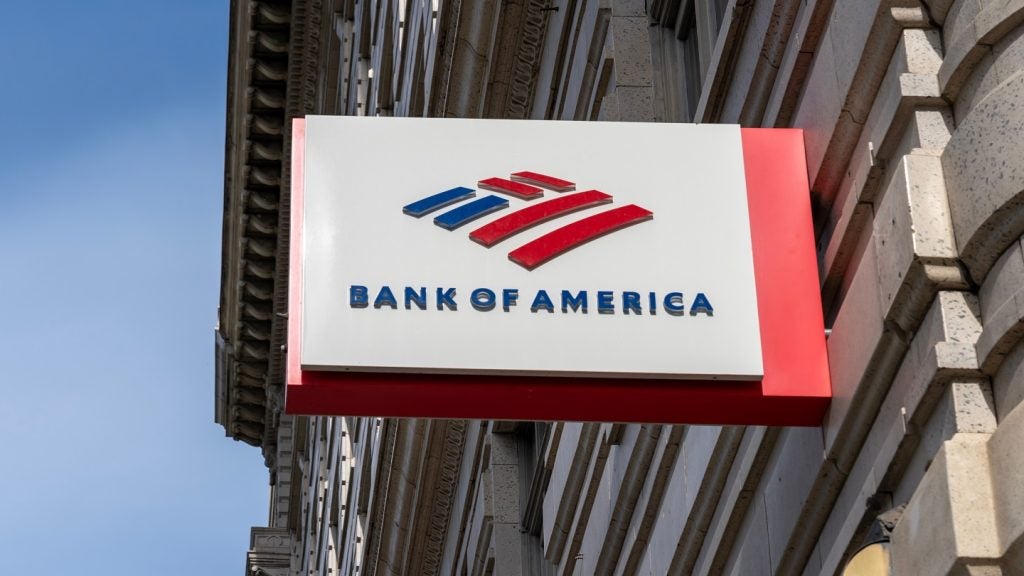
Grant Collinson talks with Rich Green, president of CIT International, about his business’s recovery from bankruptcy, his market focus, and his relationship with the broker community
CIT Group reported four straight quarters of profitability in 2013, three years after emerging from bankruptcy.
Net profit for the firm was $675.7m (495.2m) in 2013 compared to a loss of $592.3 the previous year, while its corporate finance and vendor finance divisions reported $183.8m and $23.3m net profit on new business volumes of $4.4bn and $3bn for the year.
Rich Green has been with CIT since September 2011 handling the company’s European vendor business. He was recently appointed to lead CIT International, giving him responsibility for corporate and vendor finance in China and Brazil as well as CIT Europe.
Leasing Life caught up with him in late 2013 to talk about plans for the European business, which increasingly for CIT means just the UK market.
Grant Collinson: What impact has the bankruptcy process had on the company?
Rich Green: Since that period, there’s been quite a transformation within the company. When I joined the organisation there had already been significant changes, from paying down high-cost debt to rebuilding the senior management team.
There’s been a focus on what the organisation wants to be and a reshaping of the business and John Thain [CIT Group chairman and CEO] has done a great job in leading that. It’s a piece of our recent history, and we are through it. Some of the challenges presented to CIT were also presented to a whole raft of different businesses, I think it’s important to note.
How well do you really know your competitors?
Access the most comprehensive Company Profiles on the market, powered by GlobalData. Save hours of research. Gain competitive edge.

Thank you!
Your download email will arrive shortly
Not ready to buy yet? Download a free sample
We are confident about the unique quality of our Company Profiles. However, we want you to make the most beneficial decision for your business, so we offer a free sample that you can download by submitting the below form
By GlobalDataIn terms of being open for business and looking at the core segments, I think there’s great clarity in what the business is and what it isn’t. CIT, like any organisation which has gone through a transformational phase, is very clear about what it is and what it wants to be. My joining the company was part of that and my remit is to grow this business profitably and responsibly. That’s pretty much what my remit is and has been since I’ve been here.
GC: looking at CIT Vendor Finance in particular, what is your position in the UK and Europe?
RG: If we look at the UK market first of all; when you look at the overall market which we know is north of $30bn [22bn] in terms of the total market opportunity. The way we’ve tried to position here is that we’re not trying to be all things to all people.
We’re trying to be pretty focused and disciplined around what we want to be and who we want to serve, and we’re making those informed calls. So when I look at the addressable market, as we put the lens over it, it’s probably somewhere between $5 or $6bn of that total marketplace. Where we have pretty much a lead position, I’d say, would be with the technology and office equipment finance sectors and then also the IT equipment space where we work with a number of marquee names across that space.
That said, we have our ears to the ground and are looking for opportunities to be more meaningful to our customers. We don’t have blinkers on, but we do have a pretty good focus which I think differentiates us from the competition.
GC: So obviously you’re active in the UK, but in which other countries are you operating?
RG: As we’ve gone through the course of last year, and as part of a broader strategic review we’ve done within the overall business, we’ve looked at our operating parameter in Europe. From that we made a determination to focus on the UK.
That’s not an easy call to make when you’ve got a European franchise, and it’s not that there’s no opportunity in Europe. But the thing I need to look at is: do we have scale or can we get to an appropriate degree of scale and get the right funding structures in place to be able to operate successfully across multiple countries? Throughout the course of 2013 a couple of significant things happened to influence this.
Number one was the Dell transaction [the sale of CIT vendor business Dell Financial Services to Dell] , that had been in the tubes – even before I joined that was being contemplated – and now we’ve successfully concluded that and it’s great for Dell and great for CIT.
Secondly, we looked at broader Europe and where we are today versus the opportunity we have to grow, and the opportunity to grow inorganically. We determined we should focus on the UK. Just to add a bit of perspective to that, less than 20% of our business is outside the UK; it’s meaningful but it’s sub-20%. We still have assets to continue to service and to run those off and we’ll continue to do that, but we won’t be operating in terms of driving new business outside the UK.
GC: Do you have vendor partners there looking for business in Europe. How does that factor into your UK-focussed strategy?
RG: CIT is a company with a global footprint and we’ve made this call with the appropriate engagement of our customers and those partners that are valuable to CIT on a global basis.
This is not something where we have made any determination locally in ignorance of customers’ needs; we’ve worked very carefully and thoughtfully with them as we made that call.
GC: So what sort of business volumes are you doing in the UK?
RG: Business volumes are not something we disclose. But I do think the market is picking up. We keep an eye on things like the consumer confidence index and the business confidence index. And recently we’ve started to see that picking up a bit.
The other dimension is what we are seeing and hearing in the marketplace and when you join these different dimensions together and then add the stats from the FLA or elsewhere, the growth rate is around about the 3% mark. If we use that and look at how
we are positioned, we can tell if we are growing in-line or better.
GC: So how are you doing?
RG: What I can say is if I look at the time that I have been here we’ve had great success. Looking at how our performance was in 2012 and 2013 against the market, yes, it has been successful. It’s important to say too that we have a very clear and secure strategy around our funding, which can be a combination of parent and other funding.
We are not like some of the banks which are taking deposits here in Europe. We work with our treasury teams [in the US] and get some funding from our parent, we also have conduit facilities.We’ve got something which is workable and sustainable – that is one of the considerations you have to take into account and I am happy we’ve got that.
GC: Do you feel more secure with your US parent behind you than some competitors in the market?
RG: I feel very comfortable with our funding situation and it’s one of the benefits we have through having a US parent. There is a strong set of people over there and I enjoy a good relationship with the US team; there is a strong degree of connectivity. You can take the very best elements of what happens in the US to help develop what we are trying to do here in the UK – we always have our antennae up.
It’s important; people want to know that you have the wherewithal to grow and the surety you can fulfil that, and I think we have. You can see the progress that has been made since John [Thain] took over in terms of paying down more than $31m of high-cost debt and respositioning the company for success.
GC: The US market is that bit more optimistic and expecting more growth than in Europe. Are you getting any of that trickling down to CIT Europe?
RG: Each market is different and the opportunities it presents are different. I look at our growth ambition; what we are looking to achieve this year in terms of organic growth and inorganic growth, and whether we have the support of our parent group to execute that. And I feel very comfortable that I have the appropriate level of support, not just in terms of funding but to be able to evaluate quickly any opportunities we have.
GC: How does the broker market in the UK factor into CIT’s business?
RG: I think there is room and opportunity for CIT to be a meaningful player in the
broker market.
We’ve just started work with the NACFB and I think it’s safe to say there is opportunity for us and in all the discussions we have had, we are being welcomed as a player who has some expertise to bring and an ability to serve in the appropriate segments.
We thought about it, we talked about it, now we’re working with NACFB and we’ve actually signed trading agreements and we’re actually writing some business.
GC: What else is in your plan for 2014?
RG: There are always several strands to what you do; an organisation needs to understand and evaluate things.
There are other opportunities that present themselves from the brokers in terms of how organisations fund themselves, whether that is block discounts or whatever it may be. And we were looking at all of those things.
The way I think about it, you’ve got the core business and the franchises and then you’ve got some things that may not be whole new initiatives but new products or new ways to market, and the intermediary or broker space is one of those. And you start to layer those things on. You look at the market and you look at what you might be able to achieve in terms of penetration or increased share of wallet.
And from there you’re into the inorganic. My job is to grow the business profitably and responsibly and part and parcel of that is making sure I’m looking at opportunities that might not just be new relationships. I mean the run rate would probably be adding somewhere between one and three new vendor relationships every week as we’ve gone through the course of this year. I would see that as pretty much part of our organic territory, but when you start to look at opportunities to buy, and that goes beyond portfolio, it could be another set of capabilities, it could be a business or otherwise. We continue to look and evaluate and that’s another strand to growing the business.
So it’s all exciting stuff. I think it’s great to be able to talk about growth because I think, over recent years, there’s been a lot of retrench and refocus in the industry. Our ambition is to continue to be a meaningful player. We have two strands of growth, one of those I can probably more immediately control than the other which may be a bit more opportunistic, but I’ve got my eyes open for both things.
GC: Going beyond CIT, what are the challenges facing the industry?
RG: Part of the challenge, if you look at the macro level, is how to ease funding and meet a need that’s there. To get people comfortable, particularly those in the SME sector, whether it’s somebody looking at a piece of equipment that’s a couple of thousand dollars that’s important to them, or a $5m investment.
The need for equipment has never melted away; it comes back to businesses having the confidence to make those decisions. Perhaps people are taking a little bit longer; more mature organisations are spending more time going through every procurement process for bigger investment, but the needs are still there. There are pockets of pent-up demand; the challenge then becomes how you free that up
Another part of our challenge is how to raise the industry’s profile and have a collective voice and corral broader interested
parties?
Everyone is looking for the bits of the market that are untapped so how do you get there and service those areas and raise awareness of the product. Some of the work going on now to focus on the SME space – the different ways of funding, the different kinds of businesses there – as much as it has matured, there is still room.







